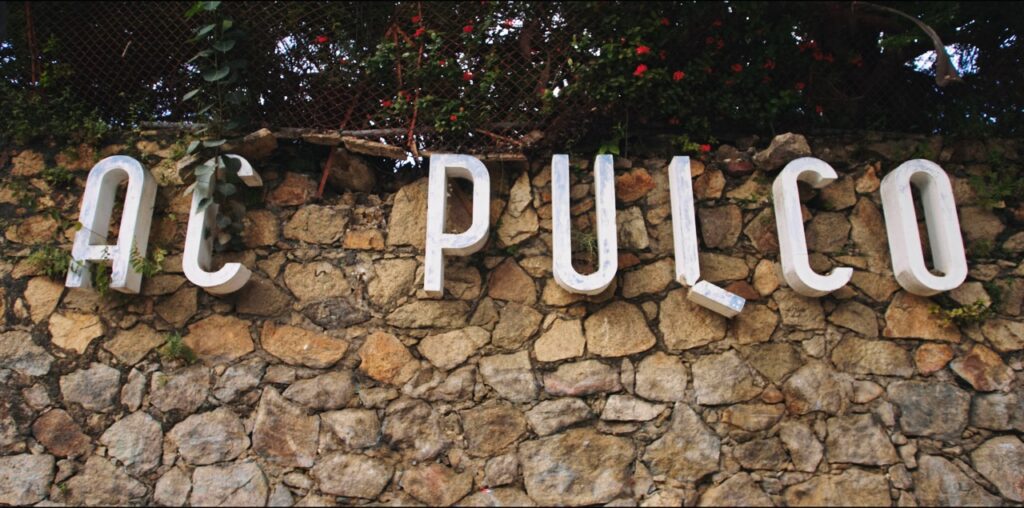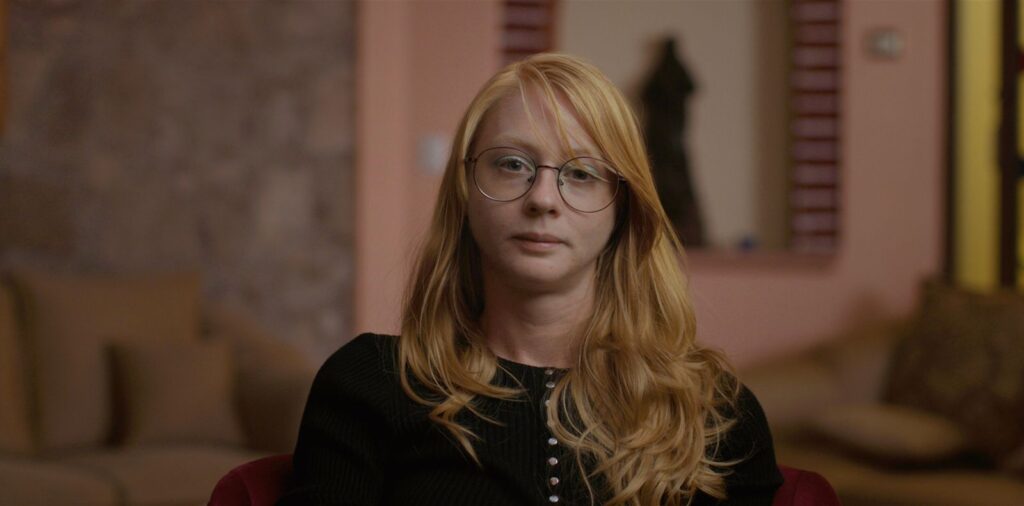Want to hear more from the actors and creators of your favorite shows and films? Subscribe to The Cinema Spot on YouTube for all of our upcoming interviews!
Introduction & Synopsis of The Anarchists Episode 5
As The Anarchists shows, the consequences of John Galton’s murder reverberate throughout the Anarchapulco community. Media coverage of this murder does more damage to Jeff Berick and Anarchapulco’s brand than expected; this, paired with Nathan Freeman’s exile from Anarchapulco results in a stale conference. All of this is the background for a deep dive into John’s life, Paul Propert’s exit from Acapulco and his subsequent suicide, and what appears to be the accelerated collapse of Anarchapulco and the anarcho-capitalist ideology in that community.
If we are looking at The Anarchists purely from a technical perspective, Todd Schramke has done a wonderful job at exploring the people behind this movement and getting them to tell us what shaped their lives as well as how they came to be anarcho-capitalists. However, I remain steadfast in my belief that as a documentary on anarchism, it is embarrassingly bad.
What this episode excels at is giving us a view of the Anarchapulco community from the outside, through the eyes of Nathan Freeman. However, with that being said, despite Freeman seeing the community from the outside, he, unfortunately, believes that the ideology of Anarcho-capitalism is viable and it is only the spokesperson of the community and his new aid, Jessica Kill, that are dragging the movement down.

Et Tu Berwick?
Although I did not cover the Freemans’ unwilling exit from the Anarchaplco community in the previous review, it was nevertheless a significant development in the events that unfolded in Acapulco. Breaking it down briefly, Freeman had wanted to expand the conference in a variety of ways but needed more help to do so. After speaking to Jeff Berwick about it and putting forth his candidate, Berwick instead took on Jessica Kill, a woman from the Hollywood scene. Now, Berwick being drunk for the first conference and sick for the second one, claims that compared to the third conference (which he was relatively healthy for), had caused him the least amount of stress. However, behind the scenes, vendors and other conference goers believed that Freeman’s removal from the Anarchapulco organizing team had done a great deal of damage to the conference and are calling for Freeman’s return.
While all of this is going down, the Freemans have started their own “anarchist” conference called Anarchawakening which is centered around holistic and spiritual healing type of activities. Now, from previous episodes, we know that these ancaps believe that this kind of pseudo-spirituality is central to anarchism, and while many anarchists can be spiritual, and may even really be behind certain spiritual beliefs and systems it is not a core tenet of anarchism. Anarchawakening much like Anarchapulco is nothing but a giant grift. Now, before we distract ourselves with the ridiculousness that is Anarchawakening, let’s take a closer look at the Freemans and how they are coping with their exile from the Anarchapulco community.
Those of us who have been watching this documentary from the pilot know that Freeman’s favorite word in the English language is “allowed”. It carries with it an implicit hierarchy, and to be fair, to Freeman, he is not completely wrong. However, the word allowed is not as hierarchical as he believes. For these ancaps, freedom, and liberty is the ability to do what they want when they want to do it by converting their surplus capital into power converting the public state into a private one. Going back to the shoddy definition of anarchism provided at the start of the documentary, we must keep in mind that an anarchist society is a voluntary society. In an anarchist capitalist society, I cannot imagine that those at the bottom of the food chain who could not afford to pay to play would want to participate in a corporatocracy where the will of the few will be imposed on the capital-less many. We see this very briefly in this episode where a few vendors tried to set up shop at the conference to sell their wares but were promptly kicked out by security under the directive of Jessica Kill. Berwick, in a cutaway scene, explains that this is because those vendors did not buy the spot and it was sold to someone else.
This should come as no surprise for those watching at home. The whole thing comes out as some kind of karmic justice considering how the Freemans treated John Galton and Lily Forester after they had forked the conference, but unfortunately both Nathan and Lisa miss the point, as they still believe that anarcho-capitalism is the way, the truth, and the light toward a better world. Hence their Anarchawakening conference. All of this unfolds in the background to what I consider the true arc of this episode, John Galton’s origin story and the fate of Paul Propert.

The Man that would be John Galton
Prior to his life in Acapulco and perhaps prior to his life with Lily, John Galton was born Shane Cress. Cress’s mother shares his origins with us including his struggle with mental health and the law. Now, what turned Cress into Galton was a boot camp rehabilitation program he was coerced into attending as punishment for growing marijuana in his apartment. It was this camp that changed Cress’s life forever and led him to anarchism.
So far in the series, we’ve known Galton has Lily’s husband and partner in crime, but until now we didn’t know Galton’s modus operandi. The driving force behind Galton’s flight from the state was that he believed in the medicinal power of marijuana. In early episodes of The Anarchists, we were given a brief glimpse into how Galton had become a healer of sorts with the herb. Lily, who had broken her jaw within weeks of meeting and dating Galton, had been partially healed by John and the strains of marijuana that he created. In this episode, we are given another glimpse into how talented of a young man John was when using marijuana as a medicine when a childhood friend of his explains how John had created a strain specific to him and his eye injury which resulted in not only pain relief but also some vision restoration.
Schramke here does an excellent job at tracing John’s transformation from Shane Cress to John Galton which in turn makes his death more tragic and Lily’s plight that much more sympathetic. Despite the documentary’s sorry attempt at exploring anarchism, I will give credit where credit is due. Schramke has, thus far, done an excellent job at humanizing the subjects of this documentary. However, despite doing such an excellent job at humanizing Galton and those who were most affected by his death, the documentary absolutely fails at providing any nuance for Paul even after he met his unfortunate fate.
“Dulce et decorum est pro patria mori”: The Fate of Paul Propert
Trigger Warning: Suicide.
If you are struggling with Suicidal Ideation, please call or text 988.
Much like The Anarchists Episode Two, which introduced us to Paul, Episode Five begins with one of his rambling monologues. This time, however, instead of his ruminations on fleeing the American state, we get a series of unhinged rants about slaughtering his perceived enemies, Lily, Jason, and Berwick, along with loose ruminations on the PTSD he was left with after his time in the United States Military. Through various subjects of the documentary, it is explained to us that Paul has been taking pictures of people at the conference and posting them online, which in turn resulted in Berwick beefing up security.
Now, due to Paul’s business with dealing cocaine at the conference and presumably outside of it, his connection to John and Lily as their former roommate, and Galton’s murder, many assume that it was the cartel that had carried out a hit to warn Paul to stop selling cocaine. Fast forward, it is revealed that Lisa Freeman had convinced Paul to return to the states, where, unfortunately, he commits suicide months later.

Where Schramke and the documentary fails is with Paul. From what we have seen throughout the documentary, Paul was an unstable vet with severe PTSD coping with substance abuse. Ever since Galton’s death, Paul was exorcised from the community and has been portrayed as the villain of the story. While he may have played a major role in Galton’s tragic murder, we must keep in mind who Paul was and how he came to be.
The title of this section is “Dulce et decorum est pro patria mori.” It is Latin for “It is sweet and fitting to die for your country,” and it is also the last line of Wilfred Owens’s poem, “Dulce et decorum est” where Owens, a poet and soldier in WWI, writes about the horrors of war and how it is wrong to tell children that going to war and dying for your country is “sweet and fitting.”
Final Thoughts on This Week’s Episode of The Anarchists
As an American, I have seen how heavily our country indoctrinates us with military and police propaganda. When we send our countrymen and women to the wars and conflicts our leaders have created, they come back with missing limbs and broken spirits, haunted by the horrors they witnessed and endured overseas. Paul was one such man left scarred by the war he had unwittingly joined and fought. I will not deny that Paul, as an ancap in Acapulco, was a shady character that did shady things, but unlike the other subjects of this documentary that practically downplayed his death, I will not. Paul was not the villain of the story; he was a victim of the state, and like many veterans that return from America’s war, he did not receive the help he desperately needed.
To Schramke and to those behind The Anarchists who left out the nuance and complexity that they allowed other subjects of the documentary, shame on you. The Anarchists is not a story that needs a villain, as it is a story of how a community falls apart due to the invalidity and failings of its core ideology. While Schramke and his team never outright paint Paul as the bad guy, he never questions when his subjects do. With only one episode left in this series, I hope we are presented with something that provides more nuance to what we are seeing, but with things going as they are, I am prepared to be disappointed once again.
This article was edited by John Tangalin.
